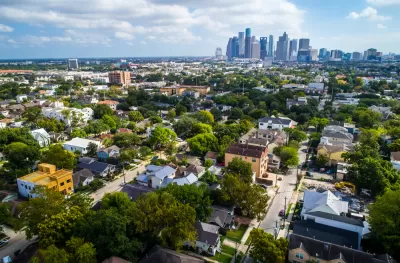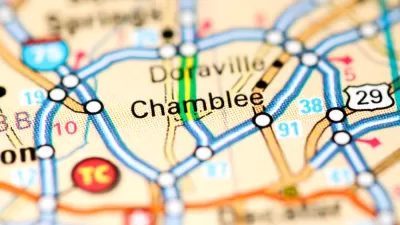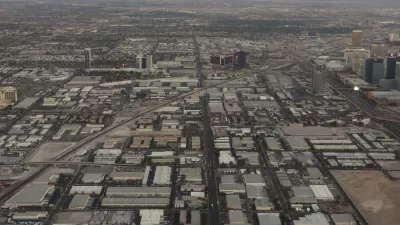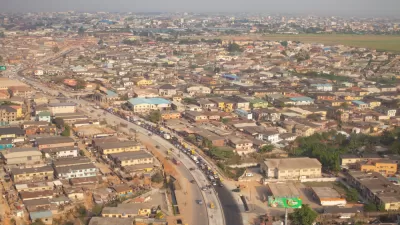Traditionally associated with its wide-open spaces, Texas is now, undeniably, defined by the cities and suburbs that comprise its built environment.

Three institutions—the LBJ School of Public Affairs at UT Austin, the SMU-Bush Institute Economic Growth Initiative in Dallas, and the Kinder Institute for Urban Research at Rice University in Houston—issued a "metropolitan blueprint" for the state of Texas. The blueprint is the first of its kind, as is the collaboration.
The key assumption underlying the blueprint is that the state is now defined by its developed places. "[C]ities and suburbs are Texas these days," reads an article by William Fulton announcing the report.
The report, therefore, offers a "road map that will move Texas toward a prosperous and successful metropolitan future" by challenging the status quo of business friendly policies and sprawling development patterns.
Before the pandemic emptied out urban business districts, Texas’ cities and suburbs had become notorious for their traffic congestion. Travel between the nodes of the Texas Triangle is time-consuming and inefficient. Governor Greg Abbott has acknowledged that road-building alone can no longer suffice to meet the state’s transportation needs.
The metropolitan prescription offered by the blueprint focuses into three key recommendations: 1) Texas should invest in Texans, 2) Texas should empower local communities, and 3) Texas needs solutions that are Texan. The report also focuses on three key areas: 1) Economic Development, 2) Housing and Land Use, and 3) Transportation and Infrastructure.
For additional reading on the blueprint—its conclusions, assumptions, and recommendations—see also an opinion piece written by Fulton, Kyle Shelton, Steven Pedigo, and J.H.Cullum Clark that's behind the paywall at the Houston Chronicle.
FULL STORY: A blueprint for continued economic prosperity in Texas

Montreal Mall to Become 6,000 Housing Units
Place Versailles will be transformed into a mixed-use complex over the next 25 years.

Planetizen Federal Action Tracker
A weekly monitor of how Trump’s orders and actions are impacting planners and planning in America.

DARTSpace Platform Streamlines Dallas TOD Application Process
The Dallas transit agency hopes a shorter permitting timeline will boost transit-oriented development around rail stations.

Without International Immigrants, the Rural US Population Would Be Falling 58%
Census data shows that population growth in rural areas is due in large part to international migrants.

Dead End: Nine Highways Ready for Retirement
The Freeways Without Futures report describes the nation’s most promising highway removal proposals.

Congressman Proposes Bill to Rename DC Metro “Trump Train”
The Make Autorail Great Again Act would withhold federal funding to the system until the Washington Metropolitan Area Transit Authority (WMATA), rebrands as the Washington Metropolitan Authority for Greater Access (WMAGA).
Urban Design for Planners 1: Software Tools
This six-course series explores essential urban design concepts using open source software and equips planners with the tools they need to participate fully in the urban design process.
Planning for Universal Design
Learn the tools for implementing Universal Design in planning regulations.
City of Mt Shasta
City of Camden Redevelopment Agency
City of Astoria
Transportation Research & Education Center (TREC) at Portland State University
City of Camden Redevelopment Agency
Municipality of Princeton (NJ)
Regional Transportation Commission of Southern Nevada





























